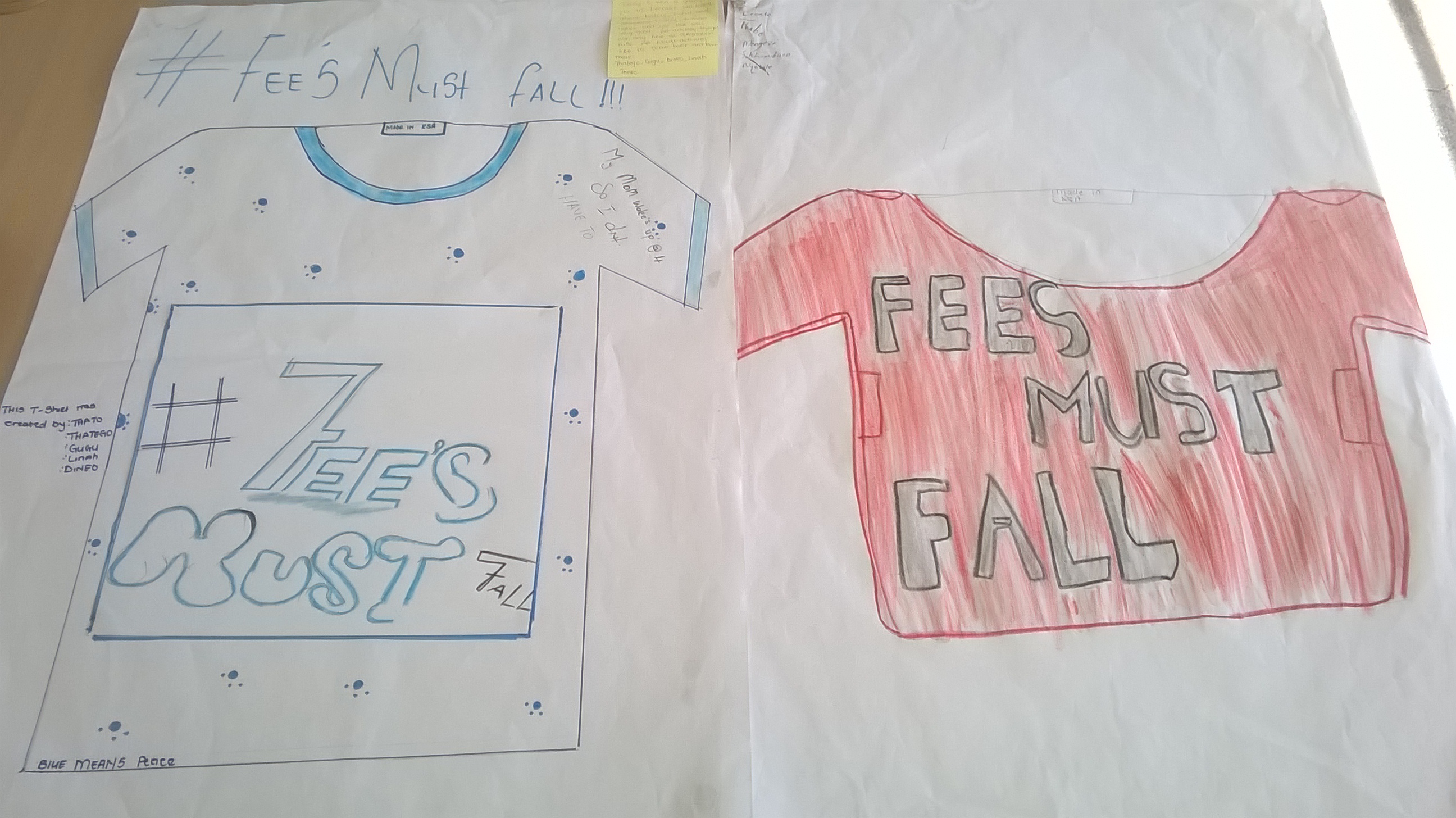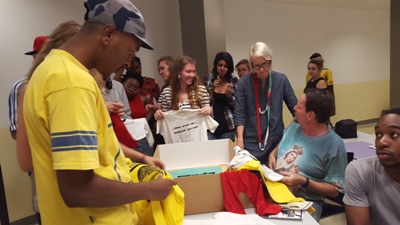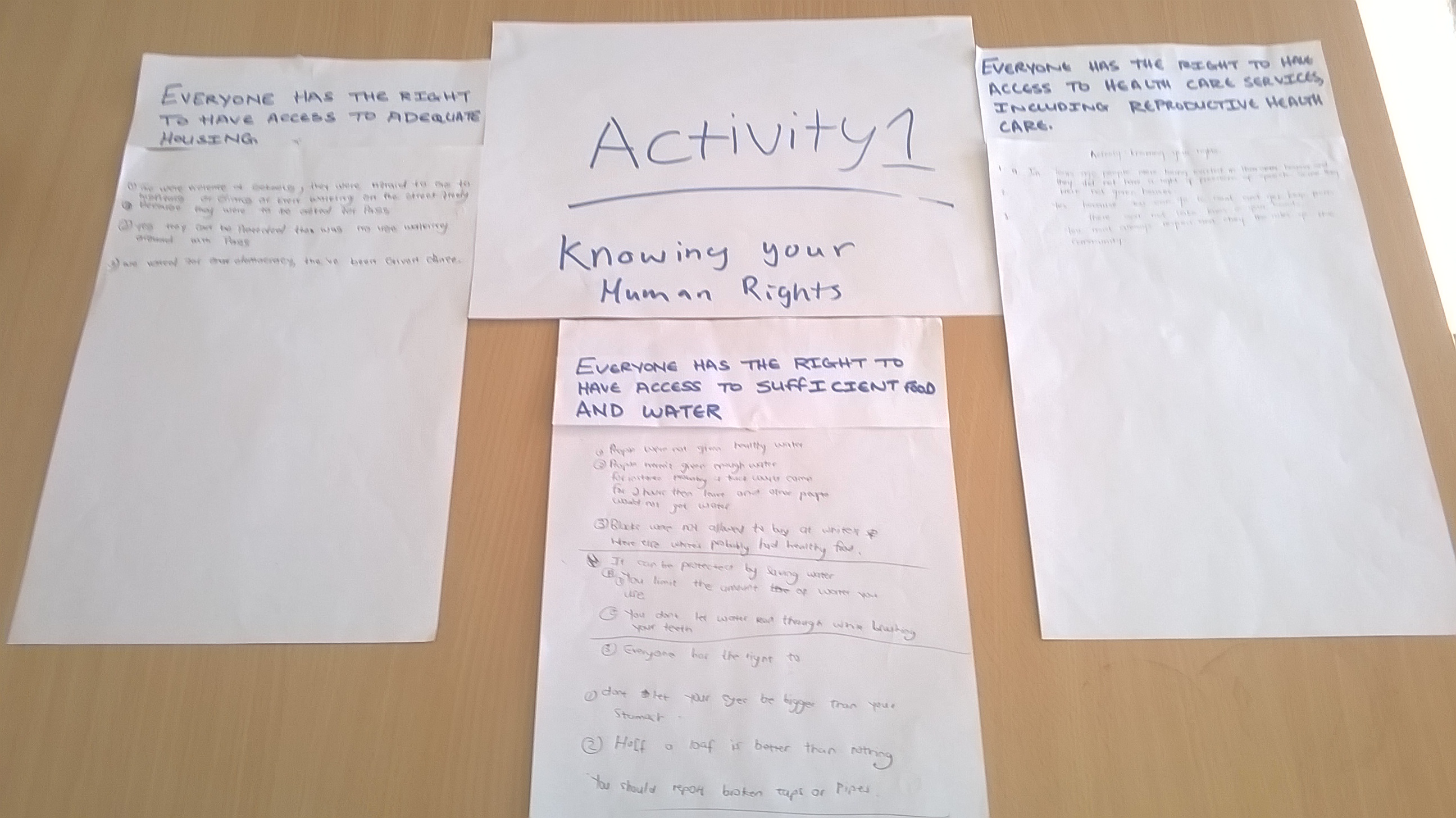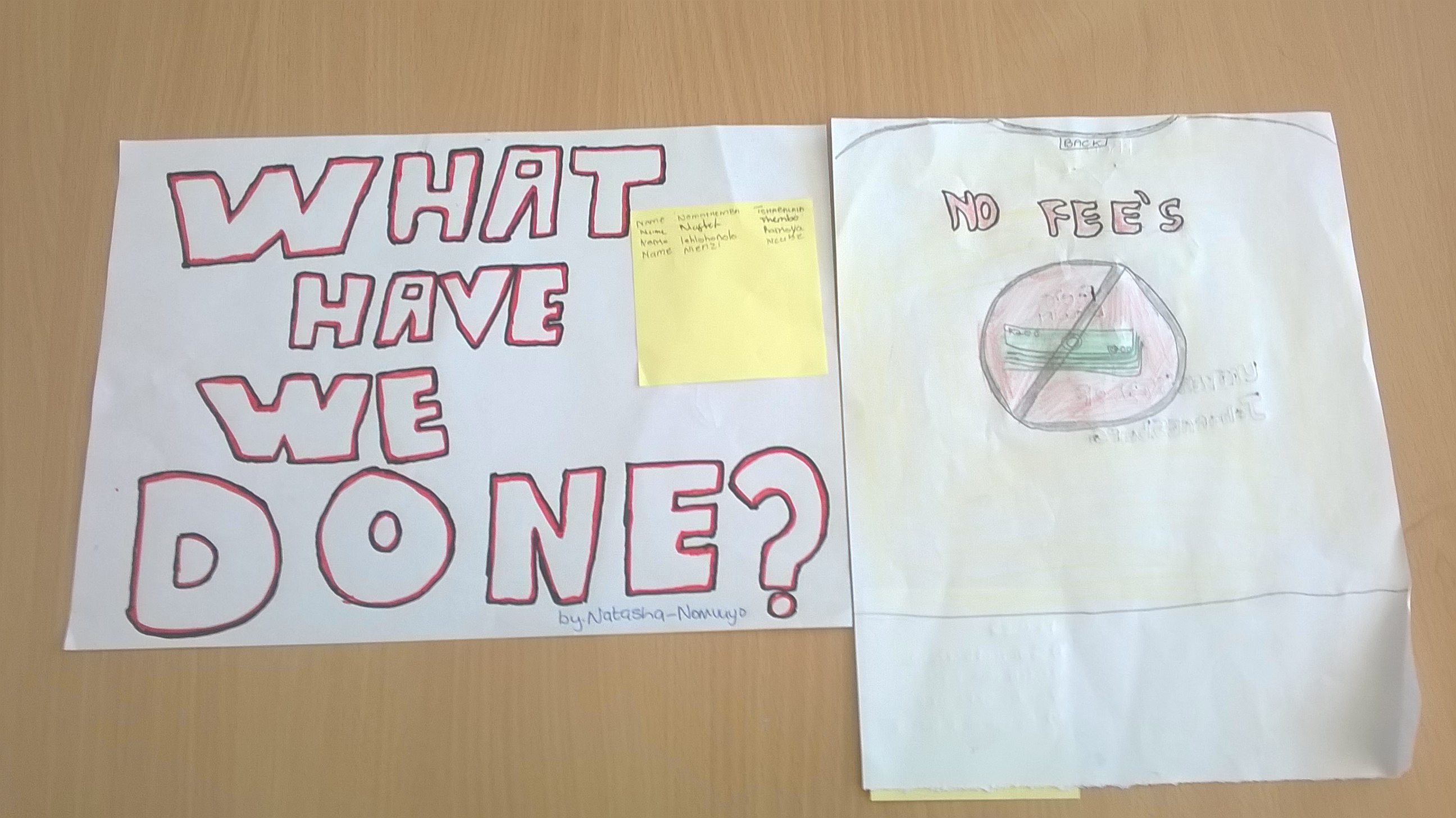To commemorate Human Rights day, the South African History Archive (SAHA) hosted two struggle t-shirt workshops on 16 and 17 March 2016, respectively. These workshops aimed to promote the importance of struggle t-shirts and its relation to human rights. 
The first struggle t-shirt workshop run by SAHA,facilitated by Frances Andrew (a fashion curator and theorist focusing on political clothing and struggle t-shirts) and assisted by two SAHA archival team members, was held at the University of Johannesburg (UJ) Bunting campus with students from the Faculty of Art Design and Architecture (FADA). This workshop was held on the 16 March 2016 from 13:00- 14:30. Here, Frances Andrew spoke about the history, meaning and symbolism of struggle t-shirts. What was interesting in this workshop was the way in which Frances categorized the struggle t-shirts that were produced during the apartheid era. She discussed three different categories which included general political t-shirts, specific party t-shirts and funeral t-shirts. Even though these t-shirts were split into different categories, Frances’ explanation of the history behind these t-shirts as well as the use of the SAHA struggle t-shirt collection allowed students to gain a deeper understanding of their usefulness. Additionally, it allowed the students to appreciate the work of those who created struggle t-shirts.
As portrayed in Frances’ work and SAHA’s struggle t-shirt project, struggle t-shirts were powerful tools in depicting the terrible laws that South Africans had to face during the apartheid era. The t-shirt enabled people to share their frustrations and views of the unjust laws of apartheid and allowed them to face limited punishment. The use of t-shirts was also considered powerful based on the colours used. Red usually referred to anger, resistance and blood, while green referred to the environment or peace. By using these colours, the t-shirts could create a whole other kind of message that could relate to a specific party’s activities. Take for instance the use of yellow, green and black. These colours which represent the ANC were used at a time where this political party was banned. To show their support for the party, many people created t-shirts that depicted the party’s colours, which became an effective way of continuing the banned party’s fight. When looking at the use of colours and t-shirts as a whole, it can be argued that t-shirts should not only be valued as clothing items, but should instead be seen as materials that possess power as it combines both body and garment.
To emphasise the usefulness of struggle t-shirts as an artistic form of resistance, the SAHA archival team were able to provide examples of struggle t-shirts that were used during the apartheid struggle, which began in the 1980s. By being able to touch and examine these t-shirts, students were able to gain a better understanding of the use and meaning of these t-shirts. Although beneficial for the FADA students, this workshop also taught the SAHA archival team how to structure and plan an educational workshop, specifically for school learners.
The second struggle t-shirt workshop, which was a pilot workshop, was held at the Lekgotla venue at Constitution Hill on the 17 March 2016 from 10:00-13:00. This workshop was facilitated by the archival team, and held for the Thetha High School. Although this workshop was centred on struggle t-shirts, its main objective was to teach learners about human rights and how these rights can relate to the struggle t-shirts. This workshop, which housed thirty-one students, was divided into two sections. The first section focused on human rights, specifically what human rights are, why we celebrate Human Rights day, how we should protect these rights, as well as the responsibilities that go with human rights. Once the SAHA archival team completed this discussion with the learners, learners were then able to take part in an activity that helped them gain a better understanding of their human rights. 
Keeping the importance of human rights in mind, learners were then led into a discussion about struggle t-shirts and how they were considered to be artefacts that depicted human rights during the apartheid era. By analysing struggle t-shirts that were handed to them, learners were able to engage more by discussing the usefulness of t-shirts, the use of colour and messages. The learners, who were divided into six groups, were then encouraged to create their own t-shirt that depicted a human right that they valued. The end product of these t-shirt creations were both beautiful and informative. Many spoke about the Fees Must Fall protest, which is a current issue at most South African universities, while others spoke about violence, safety and equality. By creating t-shirts and discussing the significance of Human Rights Day, learners were able to learn about the human rights violations that were enacted by the apartheid government and link that to current human rights violations.
By hosting these two workshops the SAHA team gave students and learners an opportunity to become more conscious of South African designs that promote and support human rights. Furthermore, these workshops encouraged students and learners to discuss ways in which they could promote and defend rights, which provided the SAHA archival team with a refreshing take on the importance and protection of human rights. Thank you SAHA team, Frances Andrew and Constitution Hill for your help and support throughout these two workshops!

See inventory for the SAHA Ephemera Collection (AL2540)
Visit the Struggle t-shirt project page
Visit the National Heritage Council page
Read our news story "The powerful role of t-shirts in activism and party politics in South Africa"










